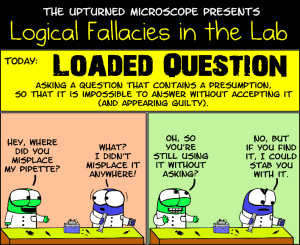Leadership for the Business Battlefield
“Man down! Heat casualty! Candidate, get his temperature! Now! Get a measurement!
“Roger that, sir. He’s hot, 104.”
“Corpsman! Quickly, we have a possible heat stroke here!”
This emergency unfolded during a field exercise more than 20 years ago at Officer CandidateSchool at the United States Marine Corps Base in Quantico, Virginia. We were training in full combat gear on a muggy, 95 degree day in the swampy expanse of Quantico’s military maneuver areas when (Officer) Candidate Jones went down like a sack of flour. Tearing the clothes from him, we (fellow officer candidates) accomplished our immediate action procedures. We were very early into our Marine careers, but we could already see that the emphasis on leadership training and development was paying off.
But what was the status? How bad was it? The answer to this question drove our next steps. It was important, critical even, to know his temperature. How far was it from normal? We needed a measurement.
“Gentlemen, if it is important, it must be measured,” Captain Melvin Spiese said later during our debriefing. The quicker and more accurately you can measure what is important, the better and more precisely you can take corrective action. He told us to remember this measurement lesson because it applies everywhere. I learned a second important lesson from Spiese during my training that summer (in the Marines, developing leaders is the number one priority.) “We (the U.S. Marine Corps) are in the business of developing leaders, not winning battles. If we do the first properly, the second will follow.” That proved to be an epiphany for me.
Clearly, it works. Just look at the Marine leaders that grace the squad bays, firing ranges, squadron spaces, and parade decks. It also works in the corporate world. A company’s commitment to workforce development affects succession planning, workplace effectiveness, employee retention, and worker morale and loyalty. Spending time and effort to develop a workforce of leaders will not only translate into better retention results, it will equip employees with the leadership tools and confidence that will make them valuable contributors.
In corporate training, when one combines a commitment to leadership development with measurement, he/she forms the underpinning of a great employee development program. In fact, they go hand in hand. Having a yardstick to measure against is only good if it is used consistently. While people development is critical to success, it is impossible without measurement.
The VOICE of Leadership
Organizations that use a short list of traits, competencies, values, or imperatives to serve as the desired leader behaviors seem to yield more comprehensive results from their leadership programs. When employed properly, this list can serve as the focal point for leadership development, as well as the yardstick for measuring leader and employee performance. For example, based on my Marine experience, I have identified five leadership traits that are readily recognized, powerfully recalled, and easily employed: Vision, Organization, Integrity, Communication, and Execution (VOICE).
Vision: the ability to see the endgame, to strategize, and to develop a 3-5 year plan. Leaders should see beyond the bottom line and articulate this vision to their business troops. They should give their developing leaders regular opportunities to excel and grow.
Organization: the ability to pull a team together to handle all required tasks, logically dissect the problem into separate functional areas, and slot each one. A leader should get the right people on the ship and make sure that they are sitting in the correct seats.
Integrity: keeps the vessel intact. Leaders should ensure that all oarsmen are rowing in the same direction. They will live and lead with values and principles. They should be an example and make sure that all involved are exerting all of their efforts toward the success of the team or initiative.
Communication: exercising skills that allow leaders to bring their team to action. Effective leaders should have the ability to explain the problem logically to their teamand convince them that it’s worthy of attention.
Execution: where the rubber meets the road. This is where leaders put the plan into action. If leaders have a good dose of V-O-I-C-E, but cannot execute, they are doomed to failure.
Practical Use of Your VOICE
Clearly defined leadership traits such as VOICE can help an organization design and implement a comprehensive leadership program. Those traits can form the basis of standard tools such as performance evaluations, 360-degree assessments, counseling templates, professional development plans, mentoring, and coaching. Those behaviors also build the foundation for what a leader should look like.
For example, Jane Doe should be evaluated in the areas of vision (strategic planning, workforce development, goal attainment), organization (the ability to pull her workforce together and use them to solve problems), etc. The company may be wise to market those traits internally so employees know that if they excel in the imperatives of VOICE, they will go far. All performance management tools should point to the leadership traits and to how well they are developed. Internal marketing can include slogans, themed signage in strategic locations, and incentives based on performance and development. It should be clear that the company prepares its workers to lead. This is how the Marines do it and it works.
‘Trickle-up’ Leadership
Leadership training can have formal and informal applications, and both can embed leadership development into a corporate culture. Clearly, it is an investment to send high-potential players to formal training. Care should be taken in selecting training candidates. For example, as a Marine fighter pilot and training officer, I participatedin the highly selective processes that appointed Marines to Top Gun , an expensive and intensive flight leadership training program. Every U.S. Navy and Marine squadron has the opportunity to send one flight crew—a pilot and weapons system officer—to Top Gun every couple of years. This crew returns to their unit with the most up-to-date knowledge and skills in aerial warfare, and a polished ability to teach it to their colleagues.
These graduates then serve as the squadron’s flight training officers. They maximize their unit’s return-on-investment by designing and tracking all flight training. They train their fellow crews to design and conduct much of the training, creating subject matter experts throughout their organization. It was critical for the Marines to appoint motivated, qualified, and capable candidates to attend training.
The same is true for the corporate world. A good candidate is a self starter who learns quickly and communicates well. Select those who are motivated and genuinely concerned with the success of the organization. They should be innovative problem solvers. Don’t waste training opportunities on employees who, though talented, have not displayed a desire to advance or help develop their colleagues and the team.
In addition to formal training like Top Gun, the Marines employ a systemic practice that I call “trickle-up” leadership. This is an informal, business-as-usual approach to developing their leadership bench. Young Marines train younger Marines to lead. As these Marines grow and mature, they continue to train others while continually receiving leadership training and mentoring in more complex initiatives. Marines are evaluated on how well they train others to lead. It ensures that good leadership practices trickle-up through any organization.
A tool that helps perpetuate this trickle-up leadership culture is professional reading. In most cases, required reading is centered on leadership (not always military leadership) and troop-leading ideals, which is found in books such as: A Message to Garcia by Elbert Hubbard; Execution by Larry Bossidy, Ram Charan and Charles Burck; First, Break All the Rules by Marcus Buckingham and Curt Coffman ; and Lincoln on Leadership by Donald T. Phillips . A language of leadership will help create and maintain the desired environment.
Titles and job descriptions should all project leadership and a discipline of execution. For example, Marines rarely use the word manager. They say “leader” instead. They rarely say “director” or “supervisor.” They say “commander.” These small details are culture builders that can make the difference between a good place to work and a great place to grow.
Candidate Jones, by the way, did suffer a mild case of heat stroke. He was properly treated, shipped home, recovered, and returned to Officer Candidate School in the following class. He went on to serve in the Marine Corps with distinction. Captain Spiese is now General Spiese and is one of the wisest men I have met. I called him this past October. He told me once again, “If it is important, measure it.”
Roger that, General. TD
A 12-year United States Marine Fighter Pilot, Top Gun graduate and Weapons Officer, Boom mentored and trained officers in the arts of small unit leadership, fighter aircraft tactics, and the competencies of operations planning, execution and logistics. Boom now does likewise for companies and organizations outside of the military. Working with sales, manufacturing, distribution, improvement, general counsel and leadership teams of companies like Textron, Pfizer, Roche, GSK, Credit Suisse and the Department of Justice, Boom and his team of BizBatt colleagues help companies to help themselves.
Contact him at boom@businessbattlefield.com.






